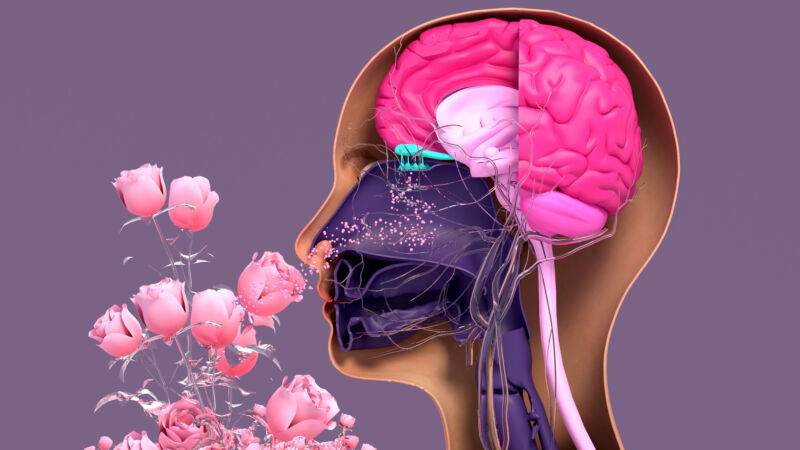
Enlarge (credit: Design Cells)
When we catch a whiff of perfume or indulge in a scented candle, we are smelling much more than Floral Fantasy or Lavender Vanilla. We are actually detecting odor molecules that enter our nose and interact with cells that send signals to be processed by our brain. While certain smells feel like they’re unchanging, the complexity of this system means that large odorant molecules are perceived as the sum of their parts—and we are capable of perceiving the exact same molecule as a different smell.
Smell is more complex than we might think. It doesn’t consist of simply detecting specific molecules. Researcher Wen Zhou and his team from the Institute of Psychology of the Chinese Academy of Sciences have now found that parts of our brains analyze smaller parts of the odor molecules that make things smell.
Smells like…
So how do we smell? Odor molecules that enter our noses stimulate olfactory sensory neurons. They do this by binding to odorant receptors on these neurons (each of which makes only one of approximately 500 different odor receptors). Smelling something activates different neurons depending on what the molecules in that smell are and which receptors they interact with. The sensory neurons in the piriform cortex of the brain then use the information from the sensory neurons and interpret it as a message that makes us smell vanilla. Or a bouquet of flowers. Or whatever else.
Read 9 remaining paragraphs | Comments
